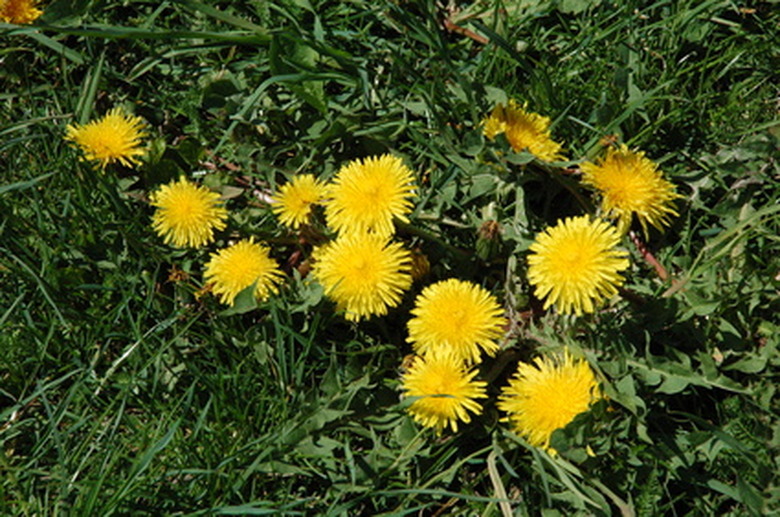Spectracide Weed Killer For Lawns
Spectracide Weed Stop for Lawns plus Crabgrass Killer is made and marketed by Spectrum Brands of Madison, Wi. The herbicide is registered with the EPA as the Chemsico lawn and weed killer concentrate. Spectracide Weed Stop is a systemic herbicide, meaning that it is transported through plant vascular systems. It is post-emergent, meaning that it targets visible weeds; it is applied when weeds are out of the ground and growing.
Active Ingredients
The active ingredients in Spectracide Weed Stop are 5.67 percent 2,4-D, 1.34 percent MCPP, also called mecoprop and .63 percent dicamba. All three chemicals kill plants by disrupting their growth hormones.
Effectiveness
The combination of 2,4-D, MCPP and dicamba in Spectracide will kill most weeds with broadleaves. Clemson University agronomists recommends it for southern lawns because it also contains sulfentrazone, a plant growth inhibitor. This formulation acts quickly to kill nutsedges that are a special problem with lawns in the south, but a repeat application is sometimes necessary.
- Spectracide Weed Stop for Lawns plus Crabgrass Killer is made and marketed by Spectrum Brands of Madison, Wi.
- Clemson University agronomists recommends it for southern lawns because it also contains sulfentrazone, a plant growth inhibitor.
Conditions for Application
Spectricide should not be applied lawns in the heat, which can damage the turf. It is best applied when the temperature is between 65 and 85 degrees F. Spectricide may damage the turf and fail to control weeds if the grass is stressed by drought. The soil should be moist, not dry, but it is best to apply Spectracide if no rain is expected for one day. Do do not apply in the wind, which can blow the herbicide onto ornamental plants. Spectracide should be applied on newly seeded lawns at half the rate recommended on the label; the grass should be at least 3 inches tall. A newly seeded lawn should be mowed at least three times before Spectracide is applied at the full recommended rate. A lawn should not be over-seeded for three weeks after a lawn is treated.
- Spectricide should not be applied lawns in the heat, which can damage the turf.
- The soil should be moist, not dry, but it is best to apply Spectracide if no rain is expected for one day.
Tips
Do not mow lawn before or after applying Spectracide; mowing reduces the grass surface that can be contacted by the herbicide. Spectracide works best on young weeds. Repeat applications 10 to 14 days apart may be needed.
Warning
Spectricide spray will kill ornamental plants if their roots are under the lawn or the spray drifts onto them. Spectricide is toxic if it is inhaled or ingested. Protective clothing should be worn during its preparation and application. Do not breatahe it in or get in on your skin.
- Do not mow lawn before or after applying Spectracide; mowing reduces the grass surface that can be contacted by the herbicide.
- Spectricide spray will kill ornamental plants if their roots are under the lawn or the spray drifts onto them.
